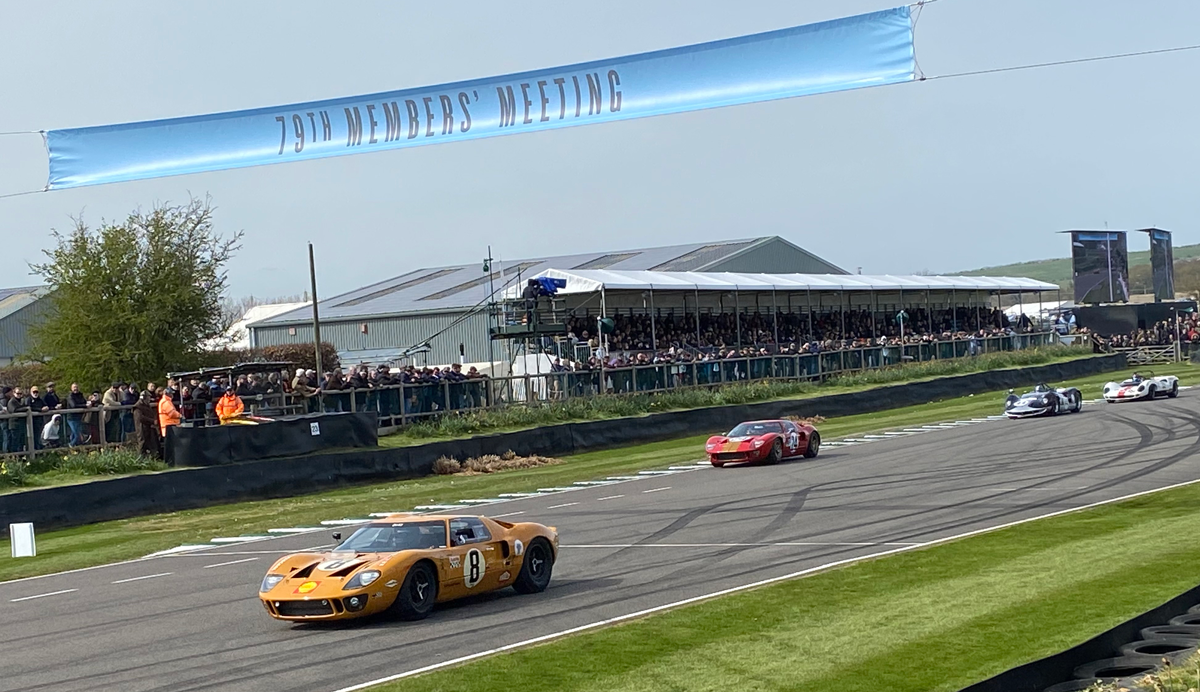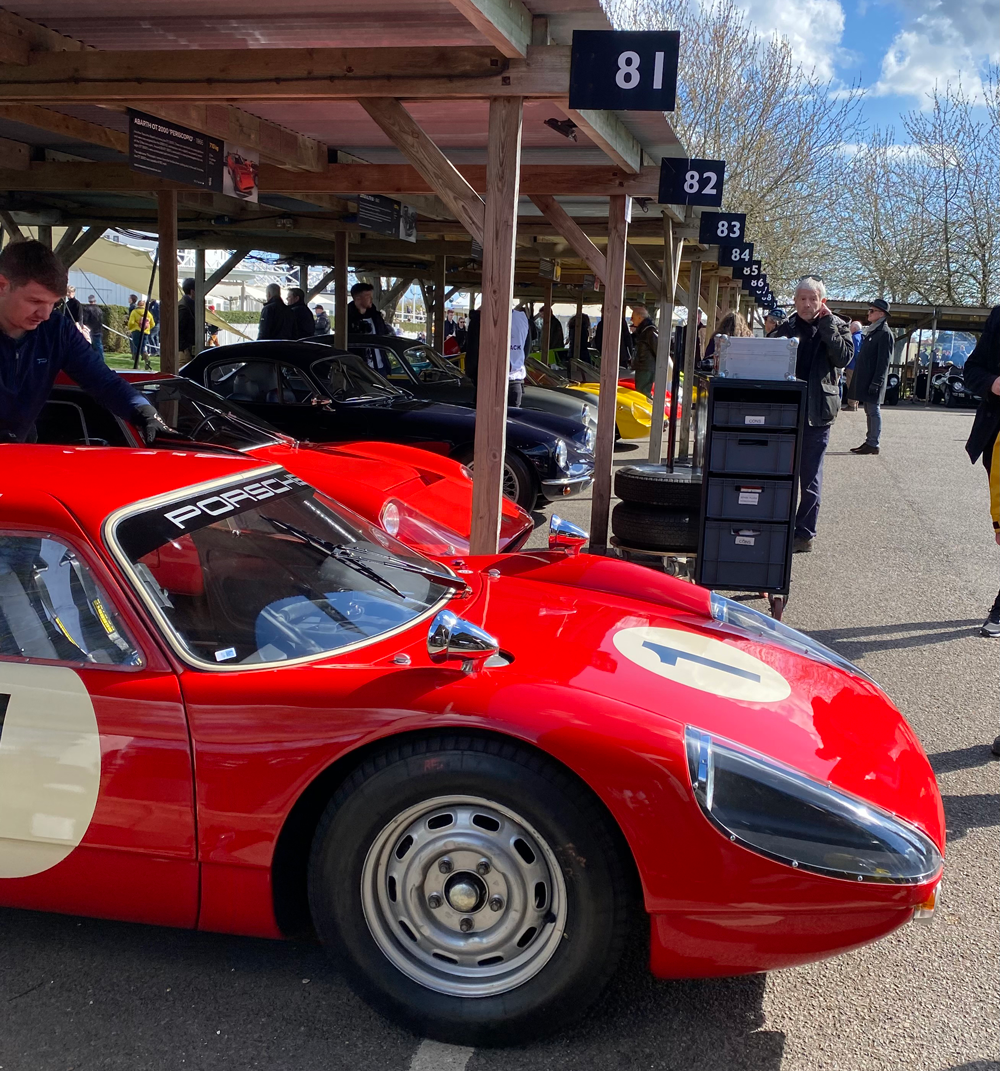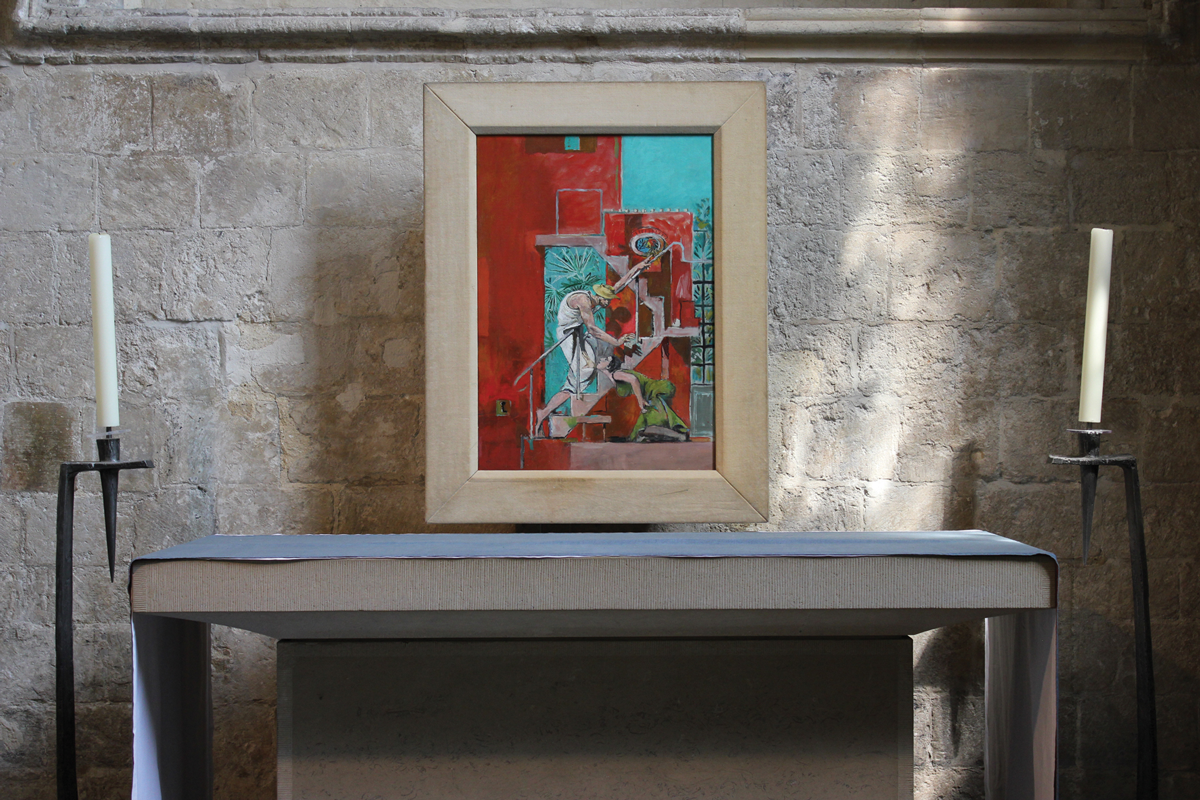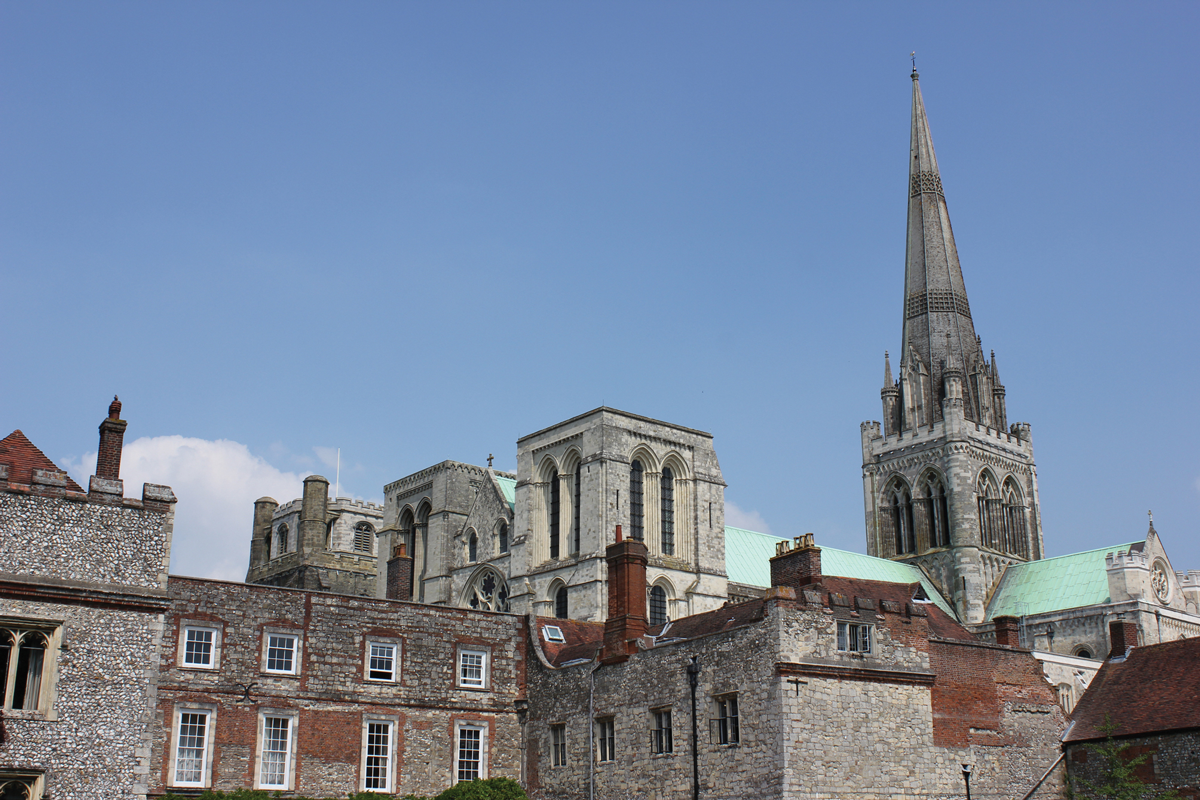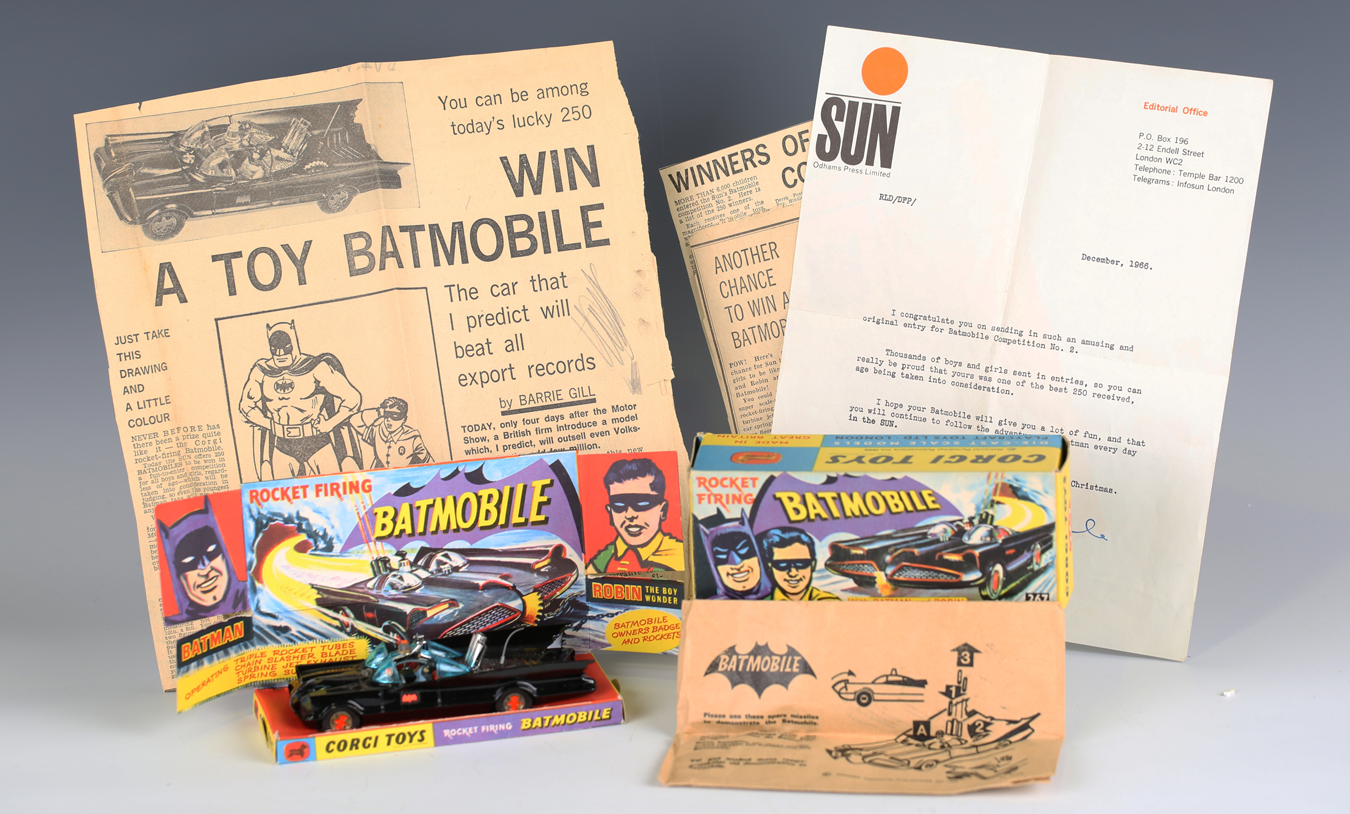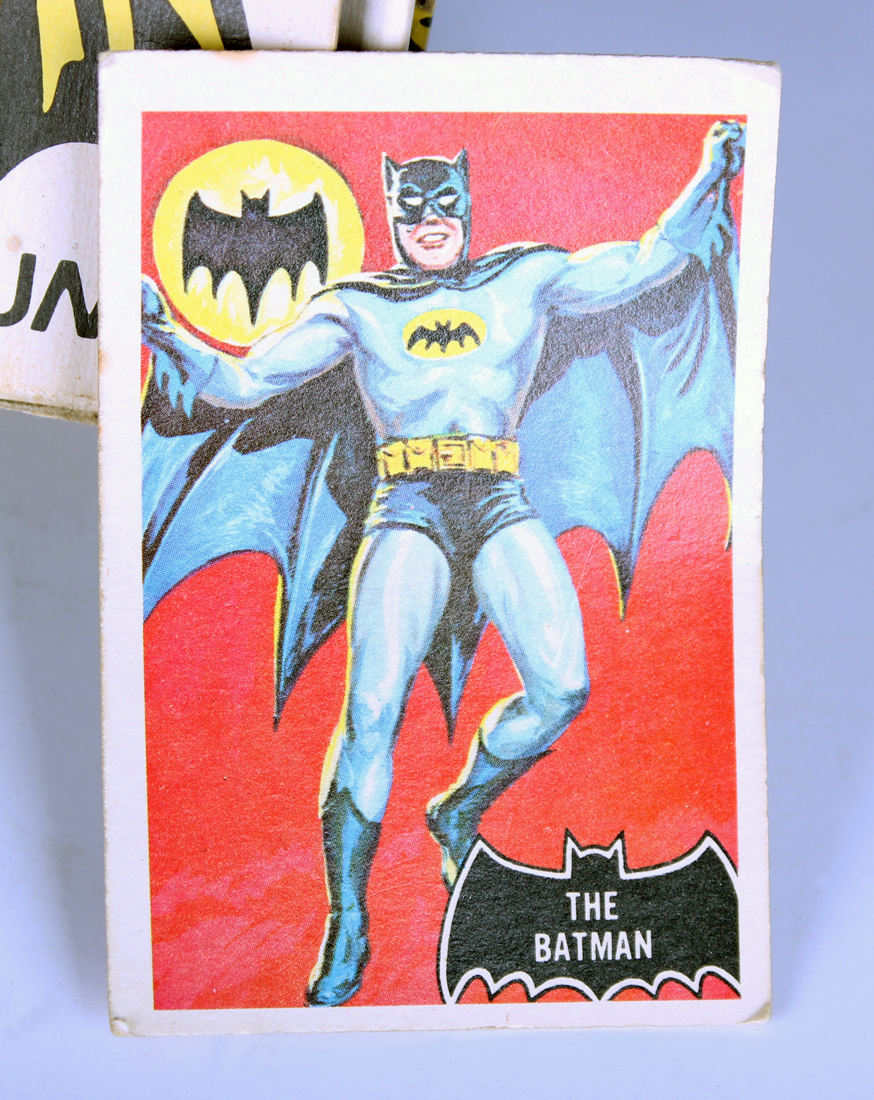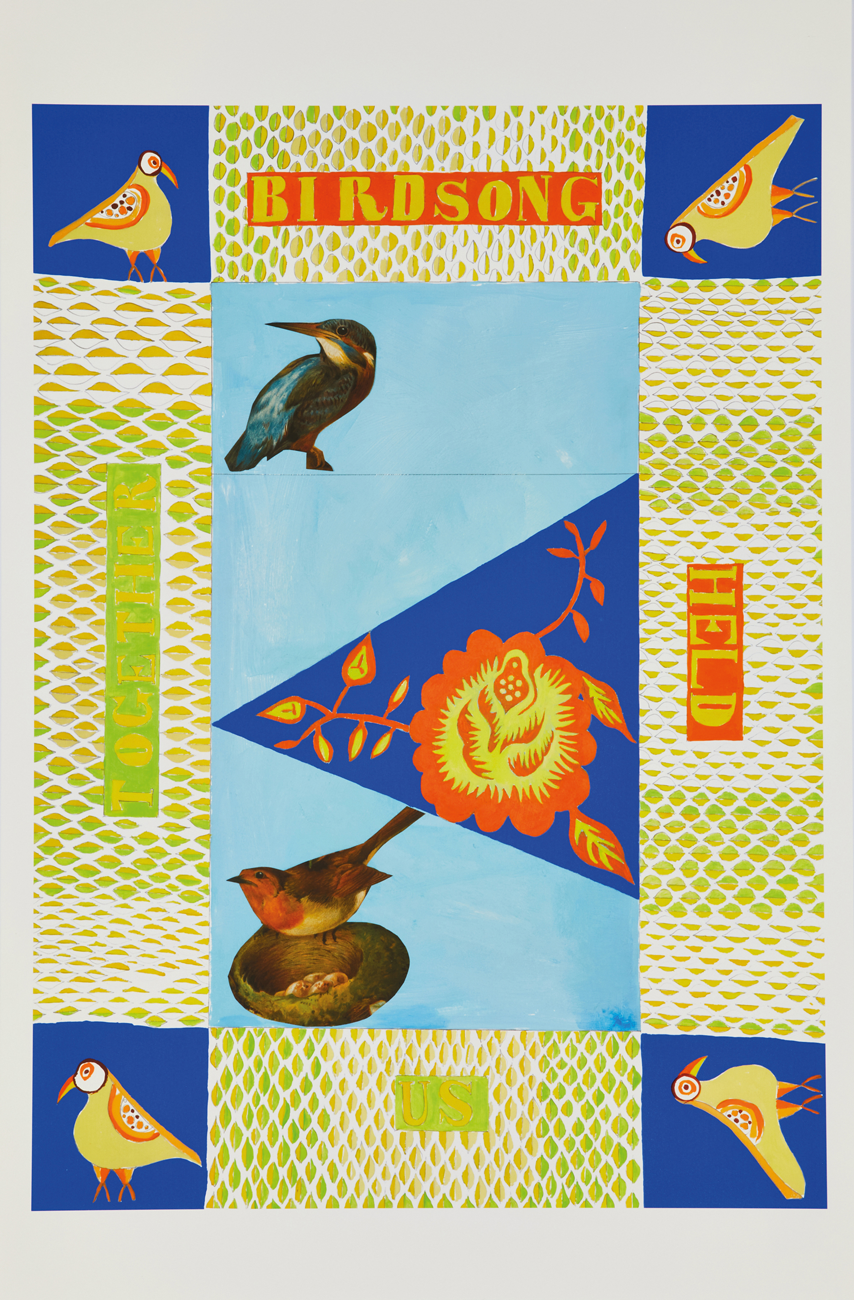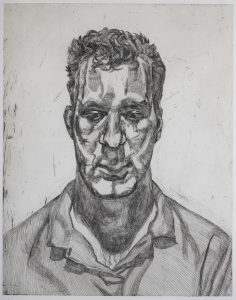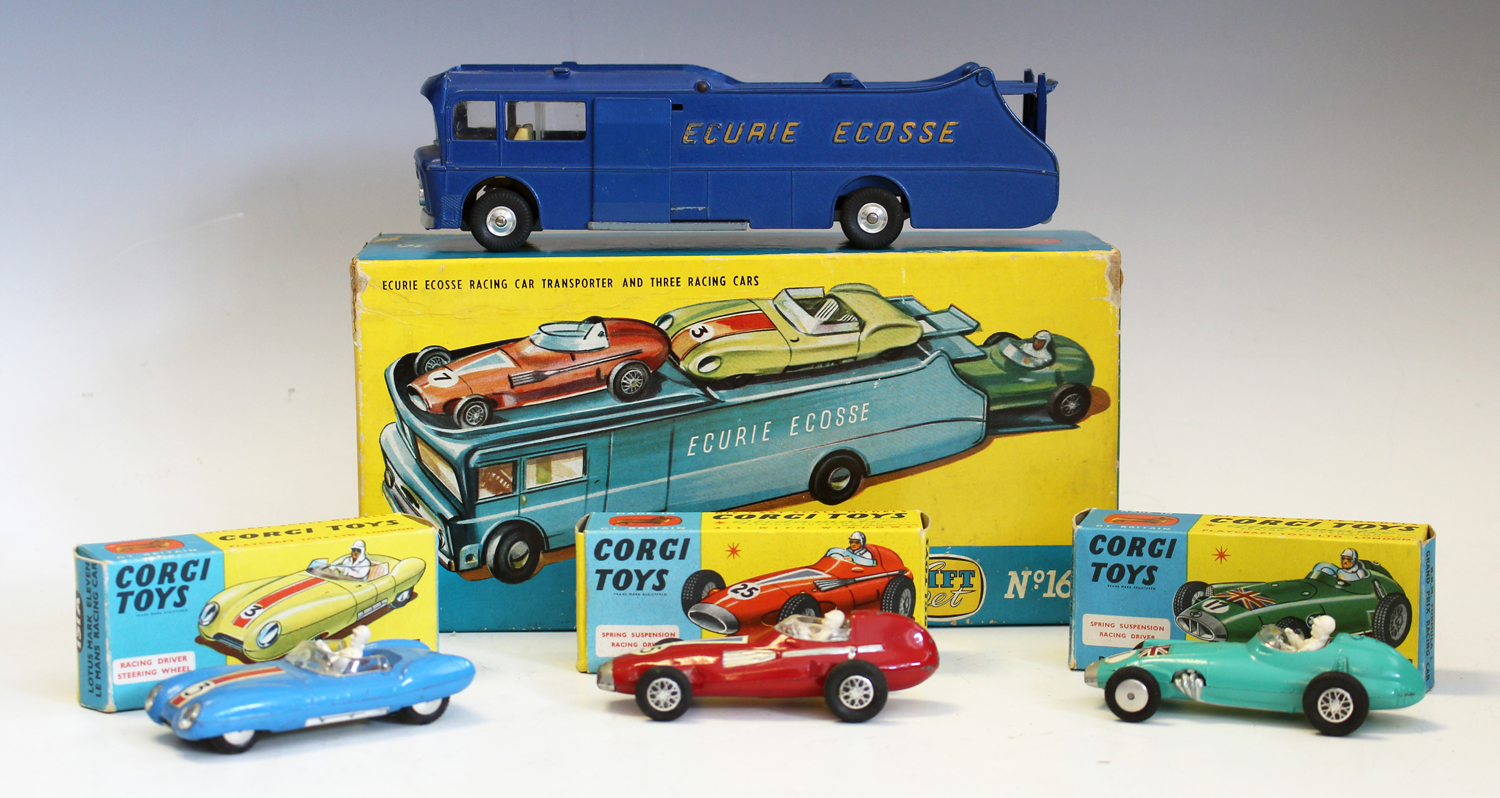
The motoring enthusiasts who turned out in such numbers for the Goodwood GRRC Members’ motor racing weekend are also passionate about motoring collectables.
Enamel signs, Dinky and Corgi cars, car mascots, models, motoring postcards and photographs, early lights, picnic sets and all things related to motoring delight the enthusiast.
The 1965 Corgi Major no.16 boxed Ecurie Ecosse racing car gift set gives a window into motor racing in the 1950s and 60s and the sort of cars that would have raced at Goodwood.
Eccurie Ecosse were an Edinburgh based motor racing team founded by the businessman and racing driver, David Murray, and mechanic, Willie Wilkinson. Their famous double decked car transporter allowed the team to carry three cars complete with a mobile workshop to race weekends.
Alongside the cars from the British racing teams BRM and Vanwall the set included a Lotus XI. It was designed by Colin Chapman. The sleek, aerodynamic body was designed by Frank Costin and the Le Mans version, powered by an 1100cc Coventry Climax Engine, achieved 7th in the 1956 24 Hors Le Mans race.
Condition is so important to price with toy cars and although the set was in good overall condition there were signs of paint loss and creasing to the boxes. Although a little play worn it still sold at Toovey’s for £200.
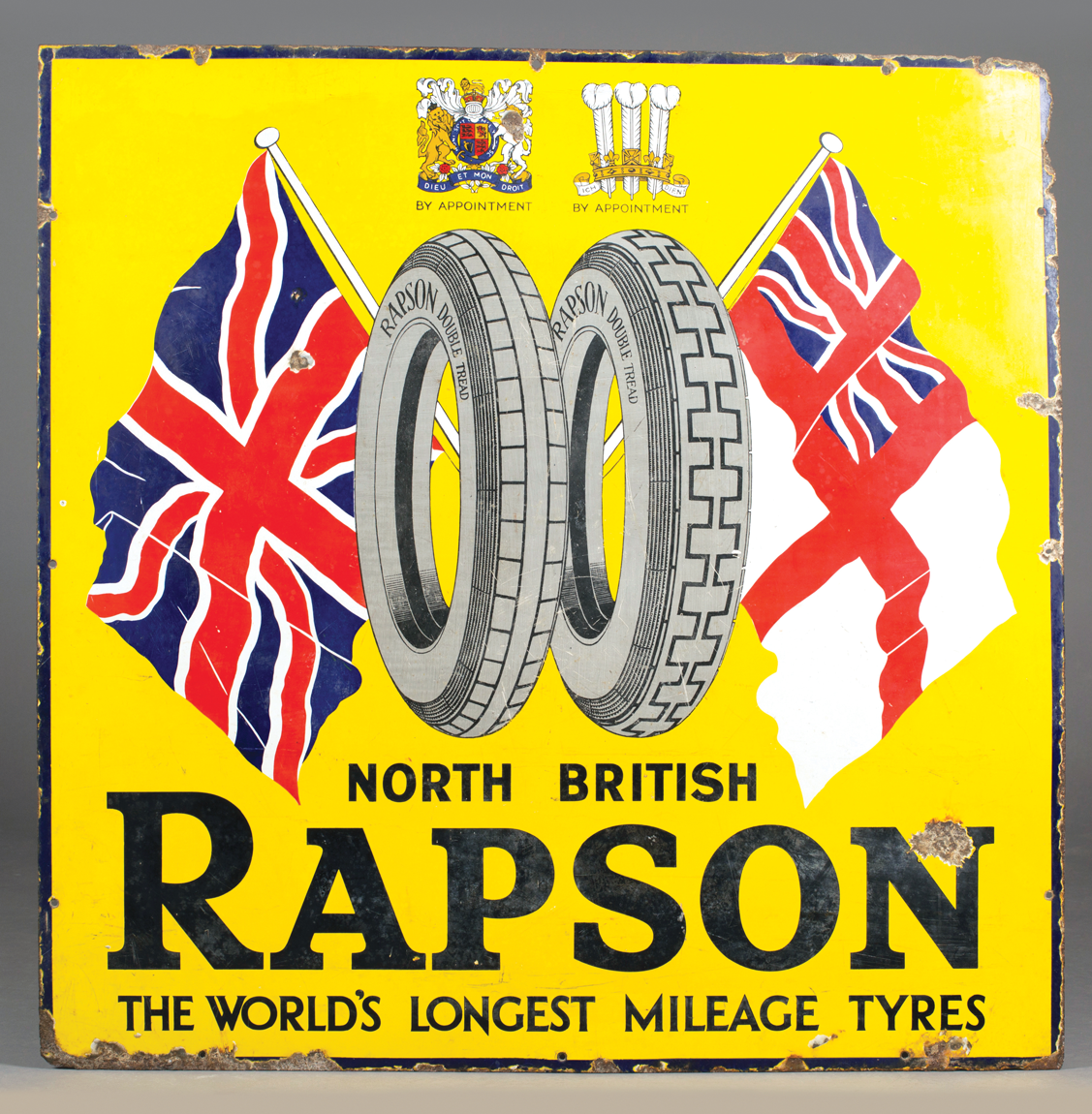
In the 1920s Mr Frederick Lionel Rapson, an automotive designer and manufacture, released the Rapson unpuncturable tyre amidst much disbelief and controversy. It was used to equip some of the fastest racing cars, on both road and track. The rare enamel advertising sign makes the claim of the world’s longest mileage tyres beneath the Royal Arms of HM King George V and Edward Prince of Wales. £3200 was paid at Toovey’s marking condition and rarity.
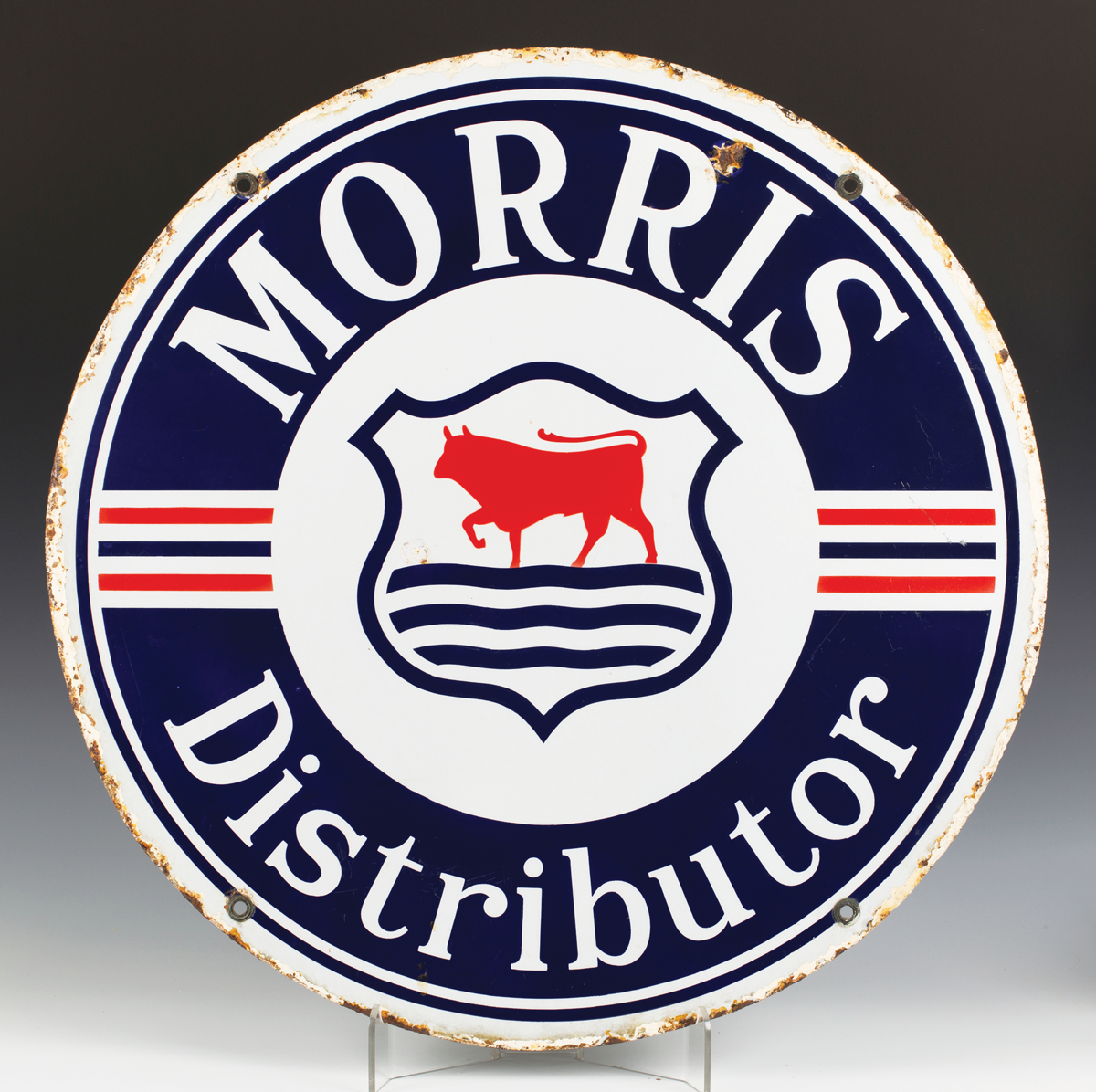
In the same sale was the Morris Distributor double-sided enamelled advertising sign which made £850. I hold the Morris marque in some affection. Like many of us my parents and grandparents had a succession of pale blue Morris Travellers when I was growing up. The interiors always had a wonderful smell and moss always seemed to grow in the sliding rear window panels held in the comforting wooden frames. We would venture out from Horsham on Sundays to the Sussex Downs or Goring-by-Sea for a walk, always followed by tea made on a picnic Gaz stove in the boot by my Grandpa’s Traveller and a slice of pink iced sponge cake.
With memories of motor racing and family outings no wonder motoring collectables remain so evocative and popular.
